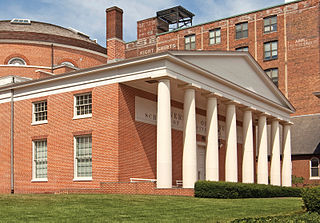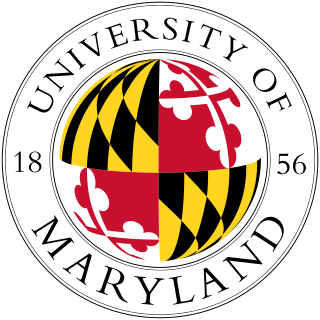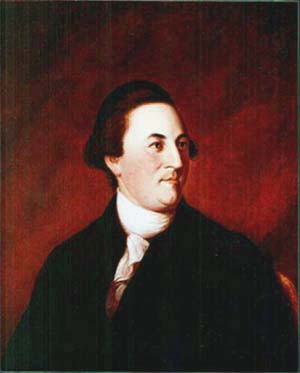Related Research Articles

The University of Maryland, Baltimore (UMB) is a public university in Baltimore, Maryland. Founded in 1807, it comprises some of the oldest professional schools of dentistry, law, medicine, pharmacy, social work and nursing in the United States. It is the original campus of the University System of Maryland and has a strategic partnership with the University of Maryland, College Park. Located on 71 acres (242,811 m2) on the west side of downtown Baltimore, it is part of the University System of Maryland. UMB's mission is to improve the human condition and serve the public good of Maryland and society at-large through education, research, clinical care, and service.

The Tawes Fine Arts Building, also known as Tawes Theatre and Tawes Hall, is the home of the University of Maryland's Department of English and is the former home of the Department of Theatre and the School of Music. The Homer Ulrich Recital Hall is located in the building which was the premier concert hall on campus before the Clarice Smith Performing Arts Center opened in 2001. The building underwent a $15 million renovation beginning in 2007 and reopened in 2009; the university's non-commercial, intellectually driven UMTV cable television station is also housed in renovated facilities in Tawes. The building, constructed in 1965, was named after J. Millard Tawes, who was governor of Maryland from 1958 through 1966. The University of Maryland Art Gallery was initially housed in the Tawes Fine Arts Building beginning in 1965 before moving to a newly constructed exhibition facility in the Parren J. Mitchell Art-Sociology Building in 1976.
Patrick Vinton Kirch is an American archaeologist and Professor Emeritus of Integrative Biology and the Class of 1954 Professor of Anthropology at the University of California, Berkeley. He is also the former Curator of Oceanic Archaeology in the Phoebe A. Hearst Museum of Anthropology, and director of that museum from 1999 to 2002. Currently, he is professor in the department of anthropology at the University of Hawai'i Manoa, and a member of the board of directors of the Bishop Museum.

George Robert Fischer was an American underwater archaeologist, considered the founding father of the field in the National Park Service. A native Californian, he did undergraduate and graduate work at Stanford University, and began his career with the National Park Service in 1959, which included assignments in six parks, the Washington, D.C. Office, and the Southeast Archaeological Center from which he retired in 1988. He began teaching courses in underwater archaeology at Florida State University in 1974 and co-instructed inter-disciplinary courses in scientific diving techniques. After retirement from the NPS his FSU activities were expanded and his assistance helped shape the university's program in underwater archaeology.

Wye House is a historic residence and former headquarters of a historic plantation house northwest of Easton in rural Talbot County, Maryland. Built in 1781–1784, it is a high-quality and well-proportioned example of a wooden-frame Southern plantation house. It was designated a National Historic Landmark in 1970.
Judith Lynne Hanna is an anthropologist, scholar, and author. She is an affiliate research professor in the Department of Anthropology at the University of Maryland, College Park. Her research focuses the relationship between dance and society in African villages and places of social interaction in America, such as schools and entertainment clubs. She has also conducted research on African cities, urban studies, and at-risk youth. She is the grandmother of YouTuber Merrick Hanna

The William Paca House is an 18th-century Georgian mansion in Annapolis, Maryland, United States. Founding Father William Paca was a signatory of the Declaration of Independence and a three-term Governor of Maryland. The house was built between 1763 and 1765 and its architecture was largely designed by Paca himself. The 2-acre (8,100 m2) walled garden, which includes a two-story summer house, has been restored to its original state.

The University of Maryland, College Park is a public land-grant research university in College Park, Maryland. Founded in 1856, UMD is the flagship institution of the University System of Maryland. It is also the largest university in both the state and the Washington metropolitan area, with more than 41,000 students representing all fifty states and 123 countries, and a global alumni network of over 388,000. Together, its 12 schools and colleges offer over 200 degree-granting programs, including 92 undergraduate majors, 107 master's programs, and 83 doctoral programs. UMD is a member of the Association of American Universities and competes in intercollegiate athletics as a member of the Big Ten Conference.

William Paca was a Founding Father of the United States who was a signatory to the Continental Association and the United States Declaration of Independence. He was a Maryland delegate to the First Continental Congress and the Second Continental Congress, governor of Maryland, and a district judge of the United States District Court for the District of Maryland.

The Wye River plantation, or Wye Hall was the Eastern Shore of Maryland home of William Paca, a signer of the Declaration of Independence, constructed in 1765, and extensively renovated in 1790 by John Paca, with Joseph Clark as architect, at a cost of $20,000. He gained ownership of the property in Queen Anne's County, Maryland, through his wife, Mary Chew. John Beale Bordley and Margaret Chew inherited the other half of Wye Island.
Anne St. Clair Wright was an American historic preservationist. A central figure in the foundation, in 1952, of Historic Annapolis Incorporated, she served four terms as president and as chairman emeritus of the board. She was responsible for the preservation of the historic center of the city of Annapolis, Maryland. Her preservation work, advocacy and achievements inspired many preservation movements around the United States. She is considered a leading 20th-century American preservationist. Among many civic offices, she served as the director of the Society for the Preservation of Maryland Antiquities; chairman of the board of Preservation Action; was a member of the Mid-Atlantic Regional Advisory Committee of the U.S. National Park Service; director of the Southern Garden History Society; and a director of the Nature Conservancy.
Paul A. Shackel is an American anthropologist and a Professor of Anthropology in the Department of Anthropology at the University of Maryland, College Park. He joined the Department of Anthropology in 1996 after working for the National Park Service for seven and a half years. His research interests include Historical Archaeology, Civic Engagement, Social Justice, African Diaspora, Labor Archaeology, and Heritage Studies. He teaches courses in Historical Archaeology, Archaeology of the Chesapeake, and Method and Theory in Archaeology.
Henry Tutwiler Wright is an American archeologist and educator. Wright has had significant contributions to the field of archaeology through his fieldwork, publications, and teaching. He serves as the Albert Clanton Spaulding Distinguished University Professor of Anthropology in the Department of Anthropology, and Curator of Near Eastern Archaeology in the Museum of Anthropology at the University of Michigan. He is also an External Professor at the Santa Fe Institute and a member of the Santa Fe Institute's Science Board.
The University of Maryland College of Behavioral and Social Sciences is one of the 13 schools and colleges at the University of Maryland, College Park. With 10 departments, it is one of the largest colleges at the university, with three in ten University of Maryland undergraduates receiving their degree from the college. 45 research centers also are located in the College. Its social science programs are collectively ranked 10th in the United States by the Faculty Scholarly Productivity Index, and 18th in the world by the Institute of Higher Education at Shanghai Jiao Tong University.
Jefferson Chapman is an archaeologist who conducted extensive excavations at sites in eastern Tennessee, recovering evidence that provided the first secure radiocarbon chronology for Early and Middle Archaic period assemblages in Eastern North America. He also is a research professor in anthropology and the Director of the Frank H. McClung Museum at the University of Tennessee, Knoxville. Chapman’s professional interests include Southeastern archaeology, paleoethnobotany, museology and public archaeology.

Wye Hall is a historic house at 505 Wye Hall Drive in rural southern Queenstown, Queen Anne's County, Maryland. It is located on the north side of the eastern point of Wye Island. It is a handsome Georgian Revival house, built in 1936 to a design by Tilden, Register and Pepper, for businessman William Stillwell. It is set on a series of landscaped terraces, at the location of the plantation mansion of American Founding Father and Governor of Maryland William Paca. William Paca is buried at the family cemetery there. The Paca residence burned down in 1879. The University of Maryland, College Park conducted archeological work there.
Shirley Fiske is an environmental and policy anthropologist. She is an anthropology professor at the University of Maryland. From 2011 to 2014, Fiske served as chair of the American Anthropological Association's Task Force on Global Climate Change. In 2016, she received the Solon T. Kimball Award for Public and Applied Anthropology award from the American Anthropological Association.
Judith P. Hallett is Professor Emerita of Classics, having formerly been the Graduate Director at the Department of Classics, University of Maryland. Her research focuses on women, the family, and sexuality in ancient Greece and Rome, particularly in Latin literature. She is also an expert on classical education and reception in the nineteenth and twentieth centuries.
Orin M. Bullock Jr. (1905–1994) was an architect, professor, author, and historic preservationist. He was one of the original team members on the restoration of Colonial Williamsburg and wrote The Restoration Manual, a book detailing the steps and procedures that must be completed to properly restore old buildings, which is still considered the seminal book of its field.
References
- ↑ "Roots of modern Mormonism / Mark P. Leone [i.e Mark Paul Leone]". Copyright Catalog (1978 to present). United States Copyright Office . Retrieved 2010-01-18.
- ↑ "Leone, Mark | ANTH | Anthropology Department | University of Maryland". anth.umd.edu. Retrieved 2020-05-05.
- ↑ “Dr. Mark P. Leone” Archived 2004-01-13 at the Wayback Machine , Department of Anthropology People , Retrieved on 2009-11-20.
- ↑ “Mark P. Leone” Archived 2009-08-16 at the Wayback Machine , “Center for Heritage Resource Studies”, Retrieved on 2009-11-20.
- ↑ "Awards and Prizes". Society for Historical Archaeology. Retrieved September 30, 2016.
- ↑ "Dr. Mark Leone Conferred the Title of Distinguished University Professor | ANTH | Anthropology Department | University of Maryland". anth.umd.edu. Retrieved 2020-05-05.
- ↑ "Leone, Mark | ANTH | Anthropology Department | University of Maryland". anth.umd.edu. Retrieved 2020-05-05.
- ↑ "Leone, Mark | ANTH | Anthropology Department | University of Maryland". anth.umd.edu. Retrieved 2020-08-25.